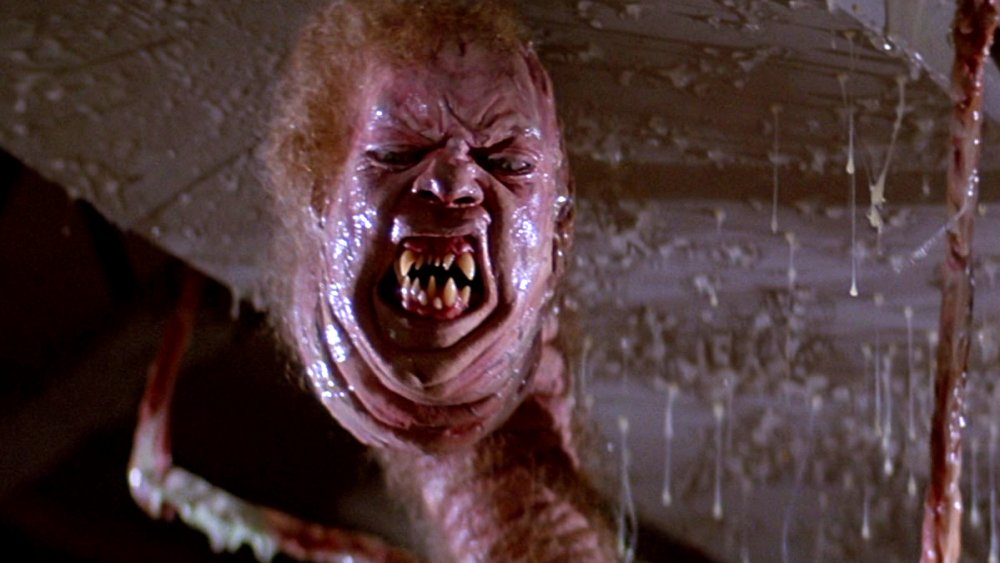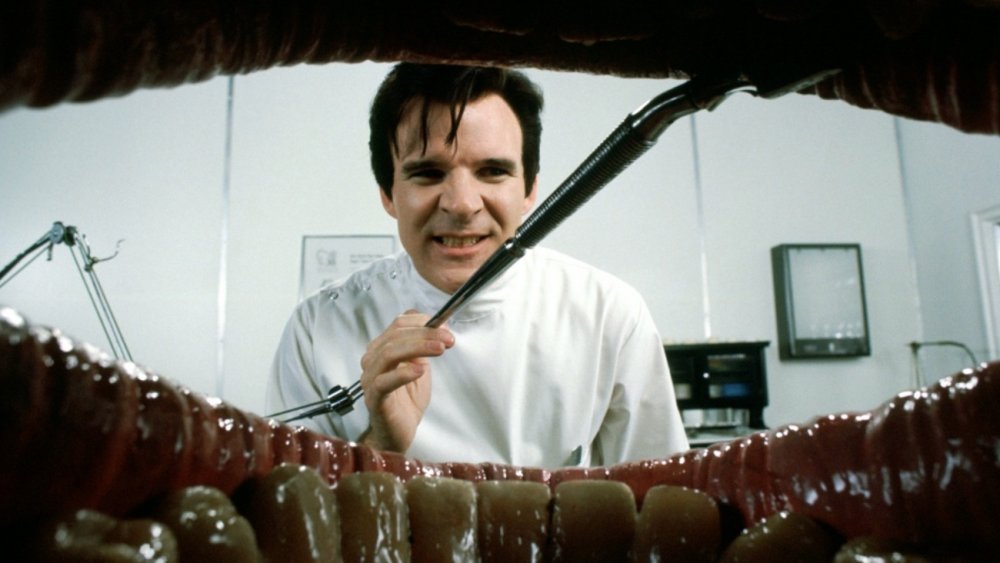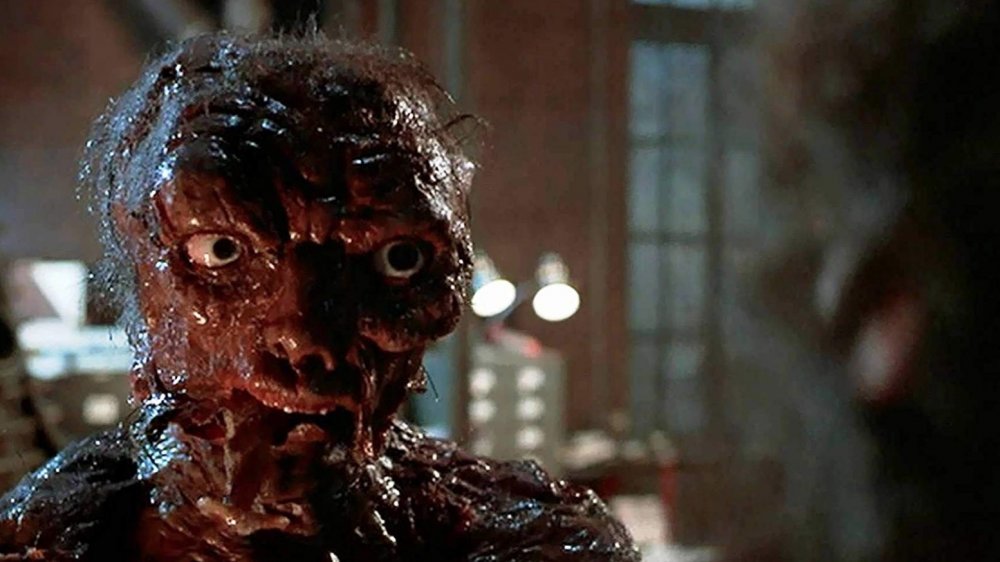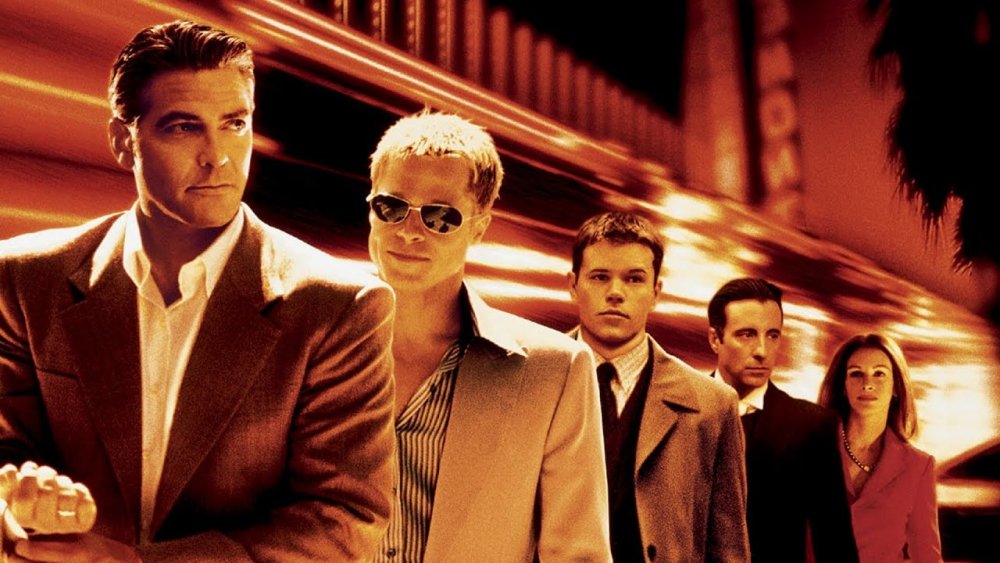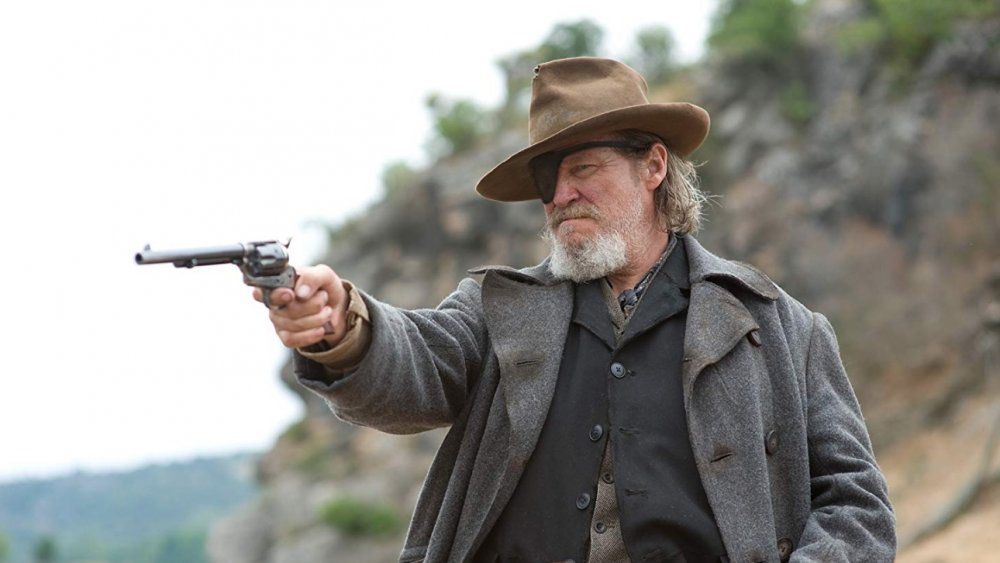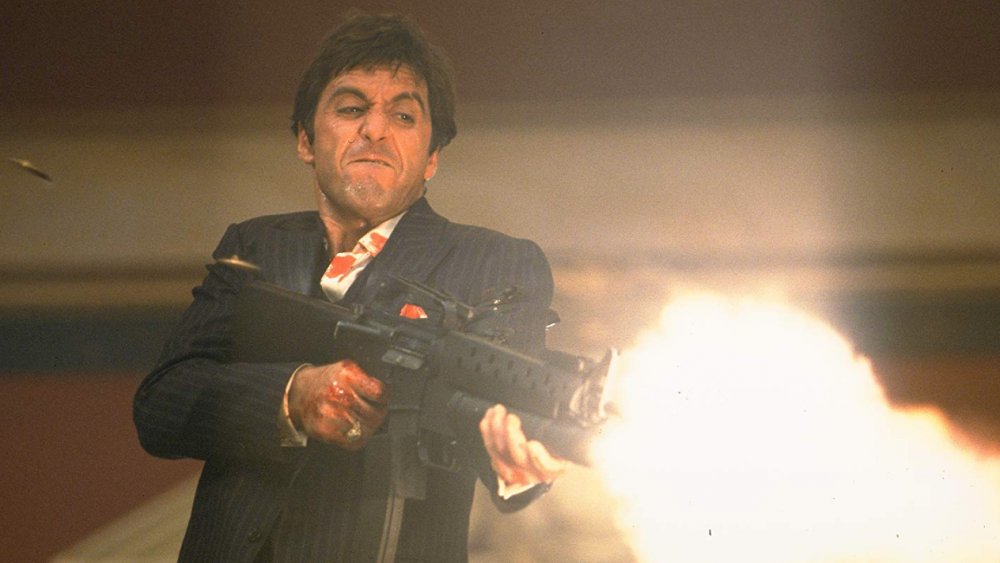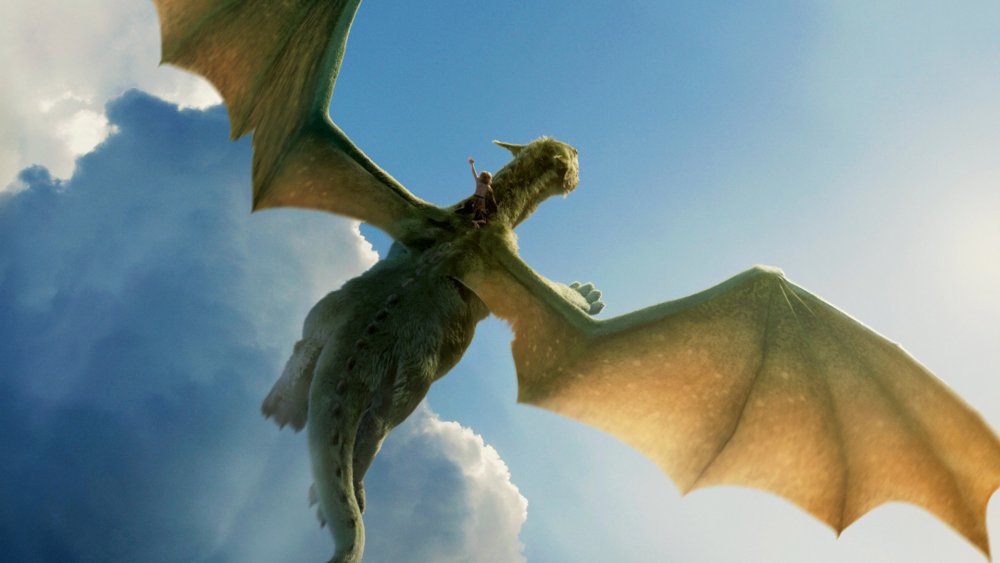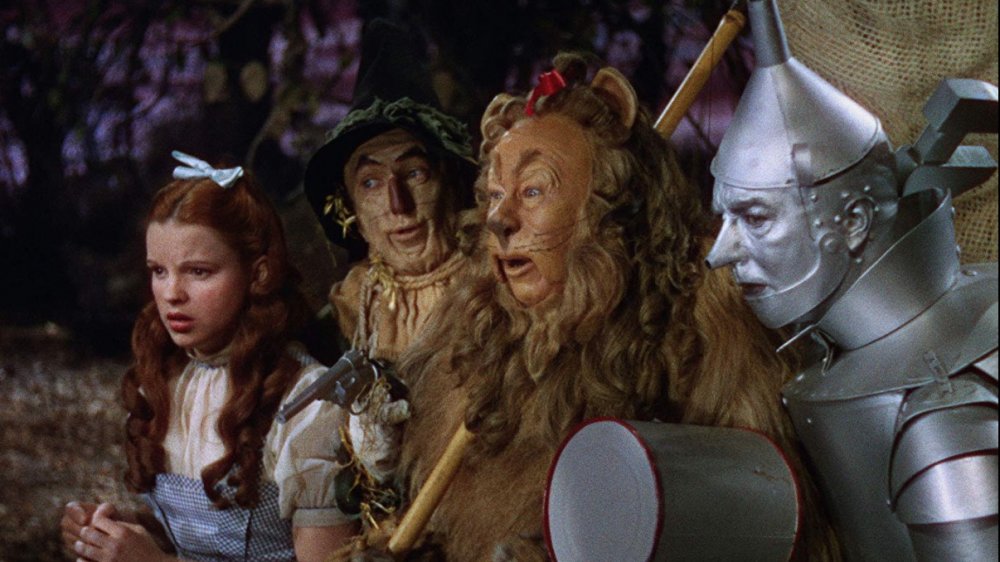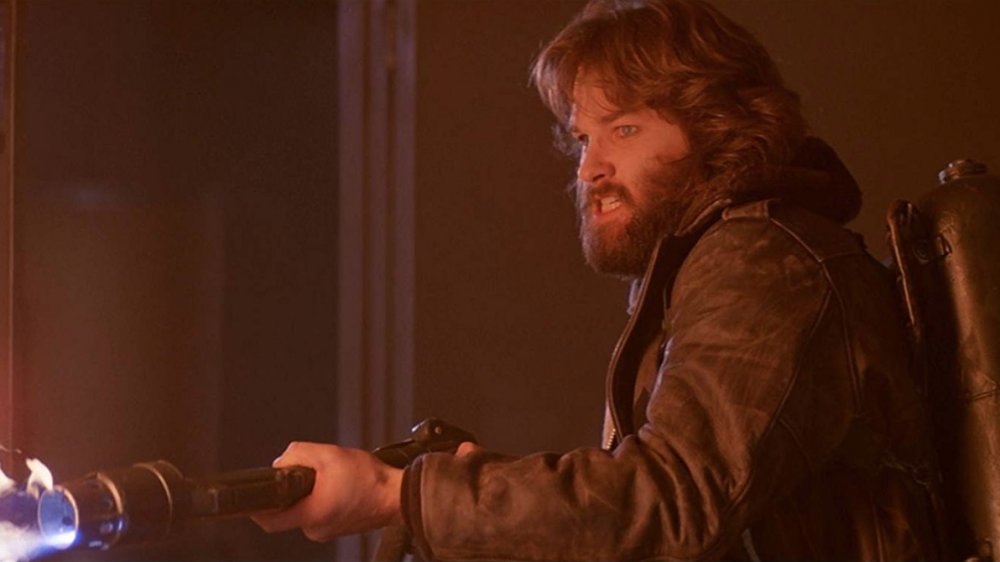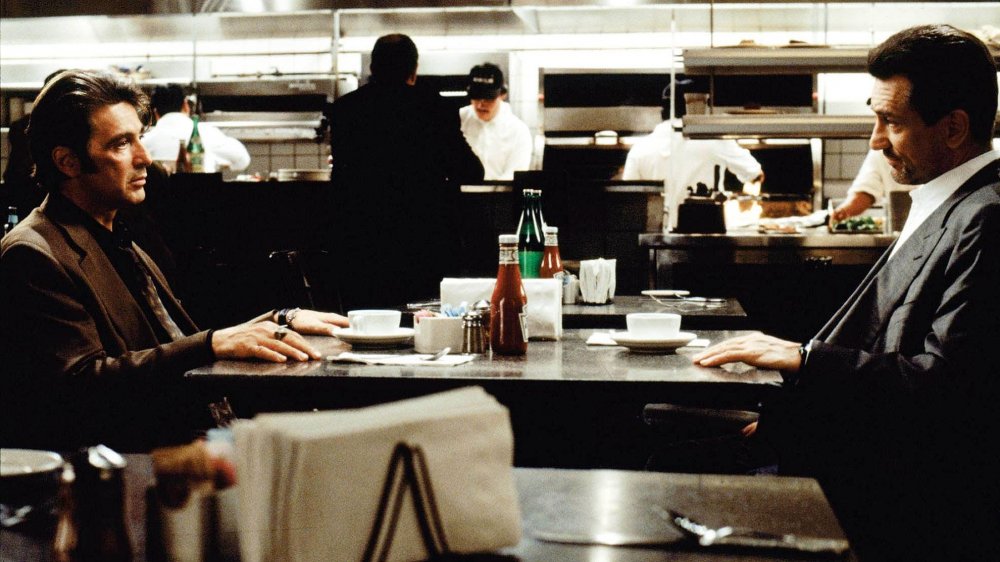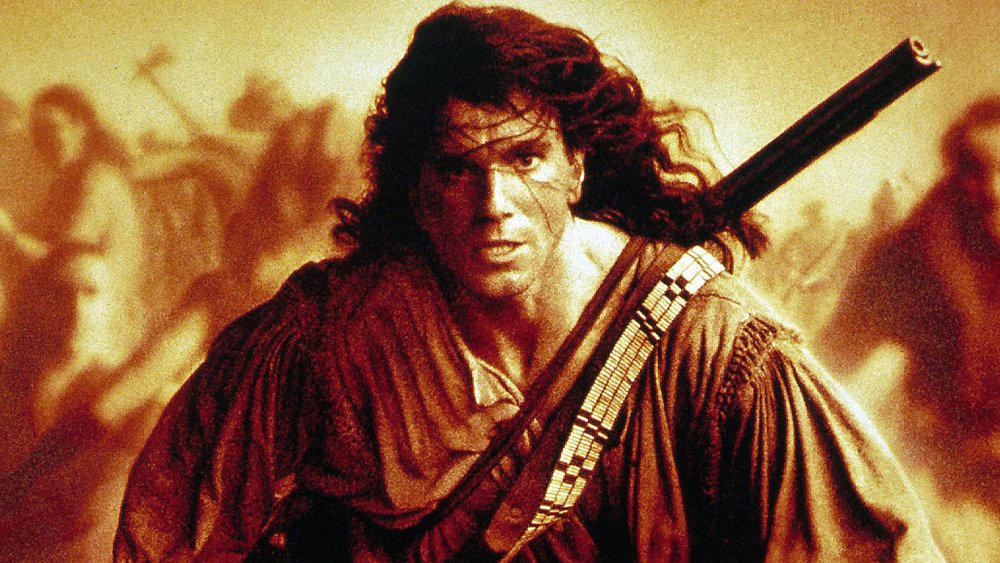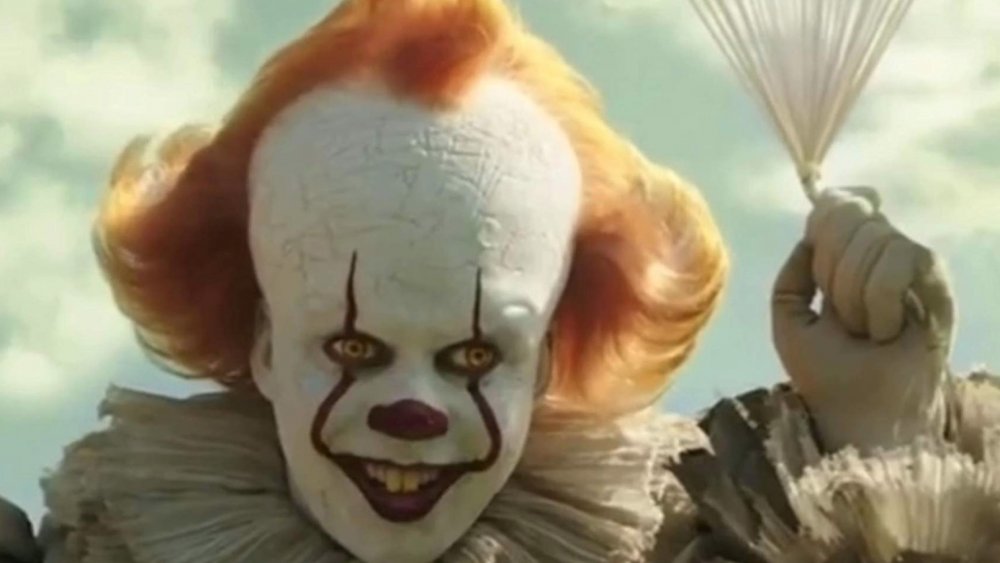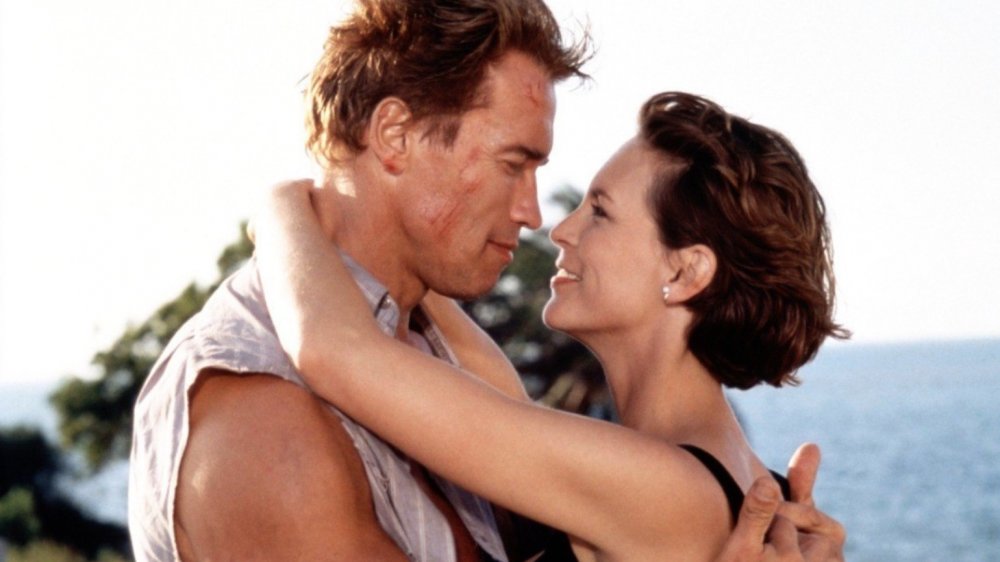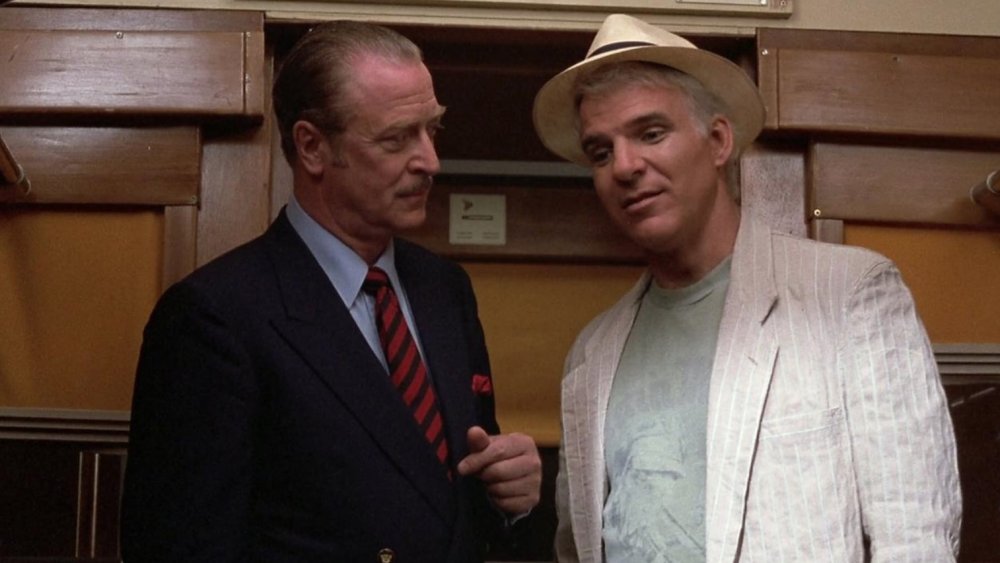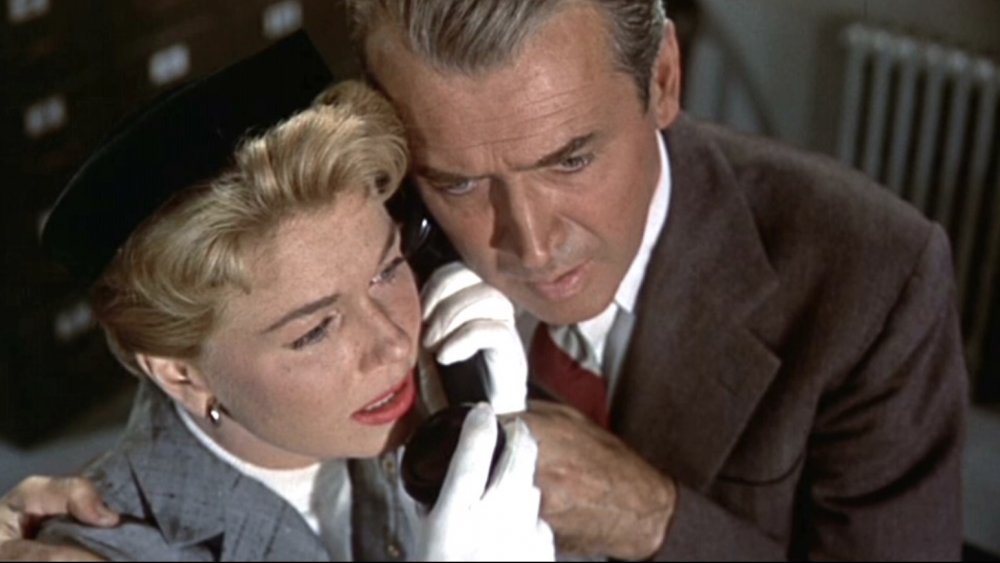Movie Remakes That Were Better Than The Original
Moviegoers tend to take certain assumptions for granted. Perhaps the most common one is this: remakes are (almost) always worse than the original. Why do we assume this? Well, it's usually true — frankly, a lot of remakes are junk. And the only reason a movie studio would remake a film in the first place is to recapture the same magic (and money) the first one generated, right? But movie magic is like capturing lightning in a bottle — it often depends on a very specific set of circumstances that can't be replicated in a remake.
But nothing is absolute, certainly not in Hollywood, and while it may be true that remakes are (almost) always worse than the originals, there are some notable exceptions. In fact, some remakes aren't just as good as the original — they're even better. Some remakes successfully update a classic story for a new generation, while others manage to improve films that had solid plots, but poor executions. Some remakes go back to the source material to mine new ideas, while others are so radically different from the original it's hard to believe they come from the same lineage. While each is different, they're all superior in some important way. See if you agree and check out this roundup of movie remakes that were better than the original.
The horrors only improve in this Little Shop
Guns. Knives. Ropes. Candlesticks. By 1960, it seemed like every murder weapon imaginable had been realized on the big screen — until screenwriter Charles B. Griffith and famed low-budget B-movie auteur Roger Corman thought of a killer plant named Audrey. The result is The Little Shop of Horrors, a strange horror-comedy hybrid about a mediocre florist's assistant who breeds a plant that feeds on human blood.
Featuring a young Jack Nicholson in a blink-and-you'll-miss-him performance as a masochistic dental patient, the film is considered a cult classic today. However, Audrey's roots in American pop culture were eventually to grow even deeper. Before making the Mouse House billions as the lyricist and composer for The Little Mermaid and Beauty & The Beast, Howard Ashman and Alan Menken produced a stage musical version of Corman's cult classic in 1982. This musical inspired the 1986 film version starring Rick Moranis (fresh off Ghostbusters) as Audrey's keeper, with Steve Martin stealing scenes as a demented dentist. The 1986 version underperformed at the box office, but it's earned a cult following of its own, and the critics were kind: it has a 90 percent Tomatometer rating.
Cronenberg's 'The Fly' bugs you more than the original
Inspired by advancing technology, Cold War paranoia, and fears of nuclear war, the 1950s was a golden age for sci-fi. The decade was so rife with giant shrews, ants, rats, spiders, condors, gila monsters, and even a gorilla with a space helmet, many of the films are indistinguishable today, but one that truly stood out was 1958's The Fly.
Starring genre staple Vincent Price in a supporting role, The Fly is about a scientist experimenting with a teleportation device who accidentally ends up splicing his own atoms with those of a house fly. Flash forward 28 years to 1986, during another era of advancing technology, Cold War paranoia, and fears of nuclear war. David Cronenberg's The Fly, starring Jeff Goldblum and Geena Davis, takes the unsettling source material into much darker, more disturbing directions. In the hands of Cronenberg, The Fly became arguably the best "body horror" film of all time, boasting an impressive 92 percent Tomatometer rating. It's a horror film that stays with you not only because it's scary, but because it's sad. While The Fly is one of the best sci-fi horror films of the 1950s, Cronenberg's The Fly is one of the best, period.
Clooney and crew outclass the Rat Pack
Frank Sinatra, Dean Martin, Sammy Davis Jr., and the rest of the Rat Pack were riding high in the early 1960s. What do you do when you and your buddies are some of the biggest stars in the world? You make a movie, of course — and the result is Ocean's 11, a film which feels like a big-budget vanity project because, well, it is. Frank Sinatra stars as Danny Ocean, who assembles his 82nd Airborne buddies to rob five Las Vegas casinos on New Year's Day. Grabbing a beer at the VFW probably would have been easier, but whatever.
In 2001, Steven Soderbergh and a crew of Hollywood's coolest remade Ocean's Eleven into the film the original wanted to be. George Clooney assumes command as Danny Ocean, with Matt Damon, Brad Pitt, and Julia Roberts joining the crew. The resulting film earned an 82% Fresh rating on Rotten Tomatoes, and it isn't hard to understand why — this is one supergroup that becomes far more than the sum of its parts when united in service of a heist story that moves as confidently as its star-studded cast. Nothing against Ol' Blue Eyes and his pals, but it took two tries to get Ocean's Eleven truly right.
There's no match for this patch
John Wayne made a career out of playing John Wayne, and in so doing became one of America's most iconic movie stars ever. Some of his films were masterpieces (basically anything directed by John Ford), some not so much (basically anything he made before John Ford). But out of all of Wayne's movies, only one won him an Oscar: 1969's True Grit. Directed by Henry Hathaway and based on Charles Portis' 1968 novel, True Grit tells the story of a young girl named Mattie Ross who hires the drunken, eyepatch-wearing U.S. Marshall "Rooster" Cogburn to hunt down the man that killed her father.
While Wayne's megawatt movie star bravado made up for it, his True Grit was missing Portis' deft prose. The Coen brothers made up for that 50 years later, returning to Portis' novel to create a more faithful adaptation. Jeff Bridges donned the eyepatch this time, breathing new life into the whiskey-breathed Rooster and securing an Oscar nomination along the way. Unlike Wayne, Bridges didn't win an Oscar for True Grit, but the 1969 original was more of a star vehicle resting on Wayne's broad shoulders, while the 2010 was top-to-bottom the better film, with a 96% Fresh Rating on Rotten Tomatoes.
Pacino's lil' friend blows away the original
Has there ever been an actor who is able to chew scenery like Al Pacino? Maybe. Fifty years before Al Pacino told audiences to say hello to his lil' friend as Tony Montana, Paul Muni racked up an equally impressive body count as Tony Camonte. Howard Hawks' 1932 Scarface has a story that should be familiar to fans of Brian De Palma's 1983 remake: A low-ranking homicidal hood works his way up the gangster corporate ladder, sadistically wiping out his foes while maintaining a soft spot for his little sister. Camonte is Italian, not Cuban, and instead of peddling cocaine it's booze, but otherwise the stories are the same (give or take a few hundred F-bombs).
Hawks' Scarface is a classic, so what makes the 1983 remake — with an 81% Fresh rating — "better?" Its exploration (and exploitation) of excess continues to inspire pop culture to this day, particularly hip-hop culture. While both films are strong, Pacino's take continues to resonate like few gangster films ever have — before or since.
'Pete's Dragon' is great - the original just drags
Disney was in a dark place in 1977. This was long before Disney+, LucasFilm, Marvel, or even the Disney renaissance of the late 1980s. The studio's Golden and Silver Ages of the 1930s through the late 1960s were over, and Disney was clearly adrift on the animation front as well as in its live-action offerings. Case in point? 1977's Pete's Dragon. While the story of an orphan boy named Pete and his magical dragon named Elliot effectively mixes live action and hand-drawn animation, that's about all it does well.
Nobody would have blamed Disney for burying this movie in its vault, but studio execs saw something in the story and brought it back almost 40 years later in 2016's Pete's Dragon. The remake earned an 88 percent Tomatometer, thanks to a story that highlighted the poignant streak in its story of lost souls forging an unlikely friendship — and special effects that brought the title character thrillingly to life opposite a stellar live-action cast rounded out by Robert Redford.
The 1925 'Wizard' was just odd
When you think of The Wizard of Oz, you probably think of Judy Garland's bright red sparkling shoes or maybe the lustrous, glittering gold of the yellow brick road. Whatever you think of, unless you prefer the Kansas scenes, you probably think of color — Technicolor to be specific. However, while The Wizard of Oz was one of the first films to be shot in color, it wasn't the first time L. Frank Baum's story hit the silver screen. Fourteen years before the Oz we all know and love was released, there was another version — and many people who've seen it would just as soon forget it.
While the 1939 version is a family-friendly classic, the original 1925 version interpreted the story as a heavy-handed slapstick silent comedy — and it isn't even funny, which is saying something, considering it featured Oliver Hardy (of "Laurel and Hardy" fame) as the Tin Man. Thankfully, movie studios still saw something in the story and remade it in 1939. It took some time to acquire classic status, but all's well that ends well: The Wizard of Oz currently sits in the tenth spot on AFI's Top 100 films list.
Better FX makes 'The Thing' much scarier
The Thing From Another World is one of the best 1950s sci-fi films, and although it boasts no shortage of fine qualities, one main reason for its success is the director. Not the credited director, Charles Nyby, but the real director, Howard Hawks, who "presented" the film, but didn't take a directing credit. Credit or no credit, make no mistake, this is a Howard Hawks movie, with crackling dialogue, competent, confident heroes, and a hawkish (no pun intended) worldview.
That said, while audiences in 1951 were probably scared stiff, viewers today won't lose any sleep over this film. That's not the case with John Carpenter's The Thing, which came out in 1982. The first of Carpenter's Apocalypse Trilogy, The Thing's truly terrifying SFX and storytelling supersedes TTFAW in the most important way: it's much, much scarier, thanks in no small part to a delightfully ambiguous ending. But what else would you expect from the man who created Michael Myers?
Pacino and De Niro bring the Heat
Al Pacino and Robert De Niro's first onscreen faceoff in Michael Mann's Heat was a cinematic milestone. The two co-starred in The Godfather Part II without sharing any screentime, so by the time Heat arrived in 1995, film fans were ecstatic to finally see them trade lines. Heat proved a bit of a tease in this respect — despite the film's nearly three-hour run time, Pacino and De Niro are only together for less than 10 minutes — but the film's quality extends beyond its star power. (It even influenced The Dark Knight).
While this was the first time Pacino and De Niro met onscreen, it wasn't the first time this story was adapted. After making waves with TV's Miami Vice, Mann wanted to make another cop drama on the golden coast. His script eventually became a 1989 TV movie called L.A. Takedown. Working with a TV-sized budget and lacking the star-studded cast of its successor, this Takedown has gone on to become a footnote in Mann's career — and it's just as well, because there's no way the meeting between Scott Plank and Alex McArthur packed the same power as Pacino and De Niro.
Thankfully the 1936 version wasn't the last of the Mohicans
Hollywood just can't seem to get enough of James Fenimore Cooper's Last of the Mohicans — written in 1826, it's been filmed 11 times. One of the earliest adaptations was the 1920 silent film version, followed by a 1936 version starring Randolph Scott as Hawkeye and Bruce Cabot as Magua. That latter casting choice should tell you all you need to know. Bruce Cabot — Captain Driscoll in King Kong — played the Native American antagonist of the film. Yes, whitewashing Native American characters was common at that time and would remain so for decades, but distractions like that severely date the film, which is otherwise an acceptable, if not particularly memorable, 1930s Hollywood adventure picture.
Nearly six decades later, Michael Mann would leave the sunny, pastel-colored world of Miami Vice and take on this 18th-century story himself, casting Daniel Day-Lewis as Hawkeye and Native American actors to play Native American characters, including Cherokee Wes Studi as Magua. The Last of the Mohicans boasts a 95 percent Tomatometer rating, although funnily enough, Mann is said to have based the script for his film less on the novel and more on the 1936 version — Philip Dunne, that adaptation's screenwriter, even received a credit.
It finally does Pennywise justice
It is one of Stephen King's most popular novels, so it was inevitable that it'd become a movie at some point, but this gruesome story about a supernatural killer spanning decades (and thousands of pages) doesn't exactly scream TV miniseries. That was exactly what happened in 1990, however — and while It isn't bad, per se, with Tim Curry clearly relishing his role as Pennywise, this two-part adaptation just lacks the visceral, all-consuming terror the story demands (which isn't a surprise, given it was made for broadcast TV).
King's It is an epic story that demands an R rating and all the bells and whistles that come with big-budget blockbuster filmmaking. In 2017, that's exactly what fans got, in the form of the first chapter of a two-part film adaptation that earned an 86 percent Tomatometer — and as much as critics liked It, moviegoers loved it even more, powering it to a $700 million worldwide gross. Released two years later, It: Chapter Two lacked the freshness and urgency of its predecessor and only managed (a still respectable) $468 million worldwide. Critics were less impressed too, giving It: Chapter Two a 62 percent Tomatometer score. While the miniseries has its fans, the 2017 and 2019 movies are the definitive screen versions of King's classic... so far.
How do you improve a French farce? Add Arnold.
Leave it to the director of The Terminator, Terminator 2: Judgment Day, Aliens, and Avatar to watch a silly French farce and think: "Y'know what this needs? More Arnold Schwarzenegger and WAY more explosions." Released in 1991, La Totale! is a comedy about a humdrum civil servant who is actually a crack secret agent, though his family has no idea. Does this sound like the plot of James Cameron's True Lies, one of the biggest hits of 1994 and the first movie to have a $100 million budget? It is! True Lies is actually a remake of La Totale!, only now with Arnie in the role of the nerd/spy and Jamie Lee Curtis as his unaware wife. La Totale! is perfectly fine for what it is, but Cameron had a very different vision for the story. He took the already absurd plot of La Totale! and dialed it up to 11, transforming this silly French flick into a mega-budgeted, action-packed blockbuster with bridges getting blown up, horses racing up skyscrapers, and Arnie blasting a bad guy from the rocket of a harrier jet. And you know what? It's a much better movie for it. Critics dug it, giving True Lies a 70% Tomatometer score, while audiences showed up to the tune of $148 million domestic and $378 million worldwide.
Scoundrels was a great remake to a dirty, rotten original
When you think "great comedic duo," Steve Martin and Michael Caine probably don't spring immediately to mind. Yet the chemistry between the Texas-born, California-raised superstar standup comedian and the Cockney-bred, two-time Academy Award-winning English thespian is absolutely undeniable in Dirty Rotten Scoundrels. However, there was another pairing of an American and a Brit in the same story that didn't have great chemistry: Marlon Brando and David Niven in Bedtime Story. Released in 1964, Bedtime Story is about a small-change scammer played by Brando and a high-class, cultured con artist played by Niven who compete for innocent women's cash in the Mediterranean. It was a great setup, but the film failed to impress and fell into movie oblivion. However, sensing the promise of the premise, Martin, Caine and director Frank Oz remade it 24 years later in 1988 as Dirty Rotten Scoundrels. It worked out pretty well, as the film earned an 89% Tomatometer score (and even inspired a 2005 Broadway Musical!). Hoping that lightning would strike twice, the story was remade again 31 years later in 2019 with Anne Hathaway and Rebel Wilson as The Hustle, but critics weren't nearly as kind, tanking it with a 19% Tomatometer score. Of the three versions of this story, we're convinced Martin and Caine made the best con artists.
The Master knew he could improve The Man Who Knew Too Much
The Master of Suspense was famous for his perfectionism, so it's no surprise that when it came time to remake one of his early films, Alfred Hitchcock wanted to be the man behind the camera. In The Man Who Knew Too Much, a couple vacationing in Switzerland unwittingly becomes embroiled in international espionage when a stranger is assassinated in front of them, but not before whispering a secret. Hitchock originally told this story in 1934 when he was still employed in the British film industry, with Leslie Banks and Edna Best playing the couple. It's a solid flick, but at a brisk 75 minutes it hardly has the time to really explore the story's possibilities. Fast forward 22 years later and Hitchock was no longer a British up-and-comer, but one of the most famous filmmakers in all of Hollywood, with a string of box office hits and even his own TV show, Alfred Hitchcock Presents. Hitchcock decided to remake his 1934 film, only this time with a bigger Hollywood budget, a more exotic locale, an extra 45 minutes, and two of the biggest stars in the world, James Stewart and Doris Day, playing the couple. The original definitely has its charms, but the remake tops it because it more fully realizes the Master's vision.
